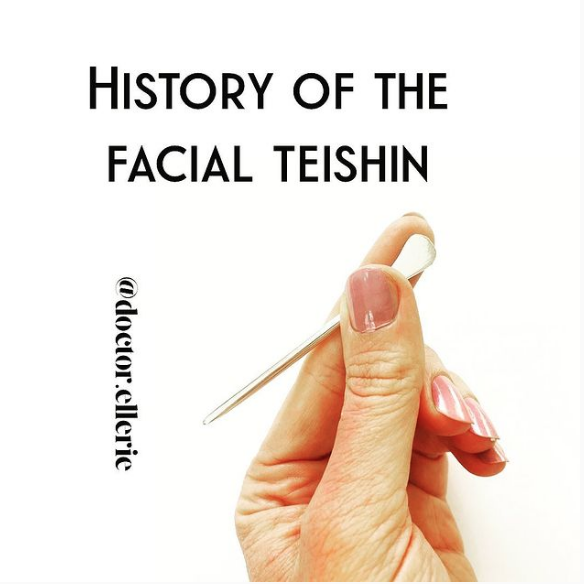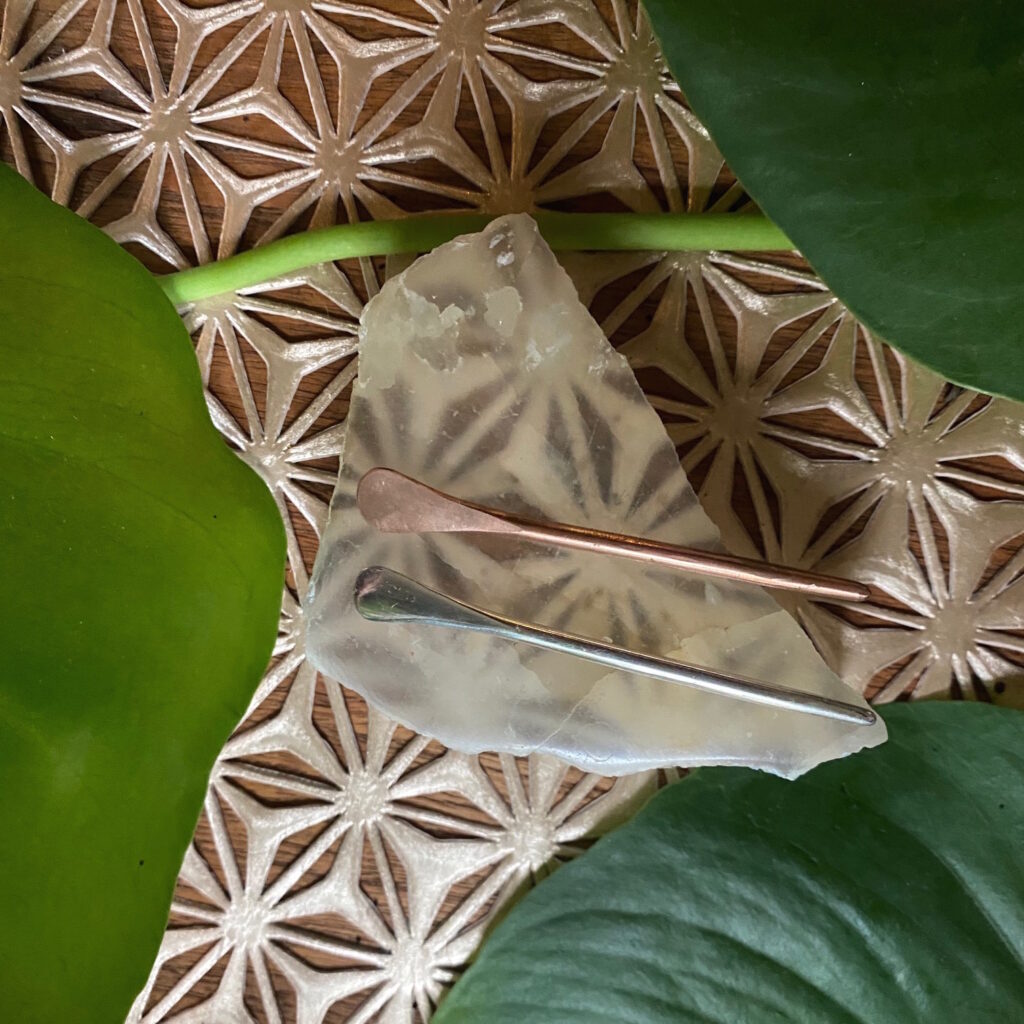
The history of Teishins
HISTORY LESSON: Let’s talk teishins. I want to be crystal clear about the origins of this tool and honor the cultural history of not just Chinese Medicine, but the broader context of East Asian Medicine.
The facial teishin, also known as a ‘fan teishin’ or a ‘washin’, is a traditional tool used in today in Japanese acupuncture. Even though I hammer out my own handmade version of this tool, the tool is not unique to me. It’s one of the classical shapes of 9 needles of classical Chinese medicine commonly known as the ‘fan shape’ needle which was discussed in the book the Huang Di Nei Jing written approxiamately between 475-221 BC. Yes, BC y’all. Meaning the origin of this tool is over 2000 years ago.
Not all the nine needles were meant to be inserted through the skin. Teishins are used above an acupuncture point to move qi in the body without penetrating the skin. A practitioner must be trained by a Japanese master to learn these subtle and powerful techniques – these techniques are not taught today in China. Keep reading to find out why.
When the People’s Republic of China was founded by the communist leader Mao Zedong in 1949, he eliminated many Chinese med styles to create a unified ‘Tradition Chinese Medicine’ or TCM. People who were seen as a threat to the Chinese government were thrown in concentration camps. Many of these were practitioners who continued to practice medicine in their lineage rather than TCM. My qigong shifu (lineage master), Master Wang was one of these people who was thrown in a concentration camp. He was freed in the 1970’s. Today he is alive and healthy in Chendu China in his 80’s. When folks in the Chinese Medicine community talk about ‘Classical’ Chinese medicine, this refers to techniques used before TCM existed.
Japanese acupuncture is different than Chinese Acupuncture. It’s thought today that Japan has more styles of acupuncture that looked closer to how chinese medicine looked thousands of years ago and is more ‘classical’ in style. There are many different styles within Japanese acupuncture. Some use insertion needles like chinese medicine acupuncture, while others use non-insertion methods, like teishins and moxa. And others use a combination. I was lucky to go to one of the few schools NUNM that has a Classical Chinese medicine program where I have learned Japanese acupuncture and Chinese Acupuncture.
What is unique about facial teishins is that I hand make is my tools are more delicate than many on the market. Honestly I feel like most of the current teishins were designed by men for men. Women are rarely identified as master’s in Japanese Acupuncture. I do not consider myself a master, but I am certainly qualified to make a tool for women – A tool that is delicate, with balance, refinement, and meant for deep nourishment. A feminine tool.
The Japanese acupuncturist culture (more so in Japan than America) are a little cultish and not inclusive. There’s a purist mentality. Most would not think about including anyone else in the cohort to use a teishin. It might offend some in that group that I’m calling it a ‘beauty wand’ and offering this style of medicine to the mainstream. I’m happy to market it to other types of practitioners because I believe a facial treatment is a powerful way to stimulate parasympathetic tone and improve qi flow to the face. It’s useful for body workers, aestheticians, and anyone who does energy work. I will never stop referring to it as a teishin, as those are important cultural roots of this tool.
The protocol I teach is a simplification of the what I learned from Funamizu Takahiro who treated those with trauma and PTSD after the big Sunami in Japan. He teaches internationally and came to Portland to teach. He uses a different shaped teishin which is a little more bulky. His tool is amazing for a trained practitioner. In my opinion the fan shape is ideal for facial treatment and self-care protocols. Sensai Funamizu even tried my tool and approved.
I hope you value this modern take on an ancient tool. I want to thank all the lineage holders who have passed down this knowledge. All who have are using this tool are now part of this lineage too!
